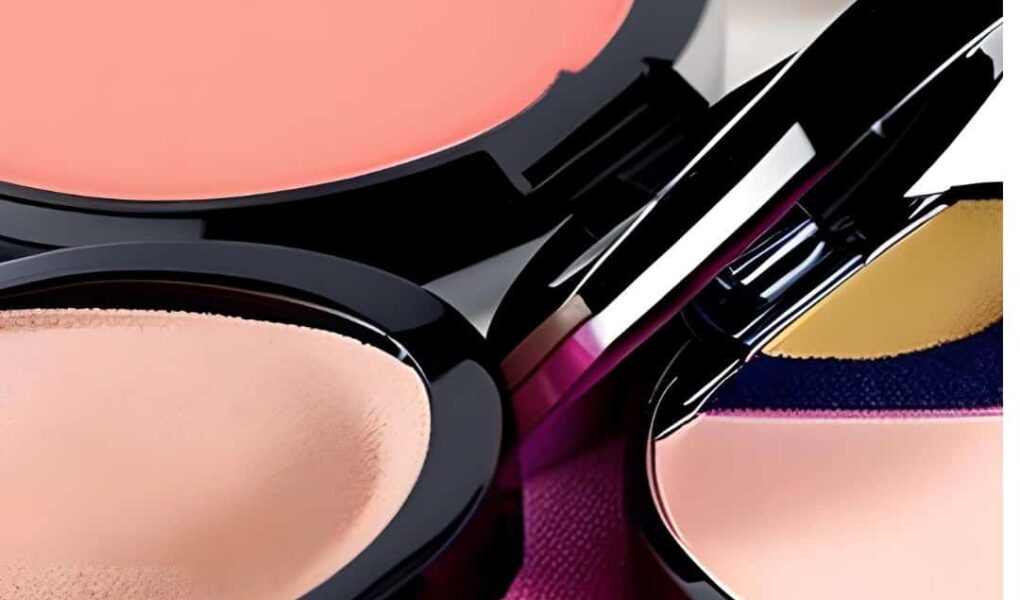Asbestos in Beauty: Why Your Makeup Could Be Harmful
Asbestos is a naturally occurring mineral that was commonly used in a variety of products due to its heat-resistant and insulating properties. However, it has been linked to numerous health problems, including mesothelioma, a rare and aggressive form of cancer. It’s alarming to learn that asbestos has been found in some makeup and beauty products, raising concerns about the safety of these items.
Why is Asbestos Present in Some Makeups?
Asbestos can be found in talc, a common ingredient in many cosmetics, including baby powders, eyeshadows, and blushes. Talc is a soft mineral that is crushed into a fine powder and used as an absorbent, texture enhancer, and filler. However, talc deposits can be naturally contaminated with asbestos, which is a known carcinogen.
Manufacturers of cosmetics and personal care products have claimed that their talc is asbestos-free, but recent studies have revealed otherwise. In 2018, a report by the Environmental Working Group found asbestos in several popular brands of cosmetics, including children’s products. In addition, several lawsuits have been filed against cosmetic companies alleging that their talc-based products caused mesothelioma.
How Did Asbestos Get in Some Makeups?
It’s unclear how asbestos got into some cosmetics products, but it’s believed to have been introduced during the mining and processing of talc. Asbestos and talc are often found in close proximity to each other in the earth, and the mining process can cause cross-contamination. It’s also possible that talc suppliers did not adequately test their products for asbestos or that cosmetic companies did not test their finished products for contamination.
What is Mesothelioma?
Mesothelioma is a type of cancer that affects the mesothelium, which is the thin layer of tissue that lines the lungs, abdomen, and heart. The disease is rare but aggressive, with a poor prognosis. Mesothelioma is most commonly caused by exposure to asbestos, which can lead to the development of tumors in the mesothelium.

Preventions and Treatments for Mesothelioma
Prevention is key when it comes to mesothelioma since there is no cure for the disease. The best way to prevent mesothelioma is to avoid exposure to asbestos. If you work in an industry that uses or produces asbestos, it’s important to follow safety guidelines and wear protective gear. If you have been exposed to asbestos, it’s important to get regular medical checkups and report any symptoms you could find more here: https://www.asbestos.com/mesothelioma/symptoms/ and to your doctor you could find more here: https://www.asbestos.com/treatment/cancer-centers/
Here are some tips on how to prevent an asbestos exposure from make ups
Choose products that are talc-free: Look for cosmetics that are talc-free or use alternative ingredients, such as cornstarch or rice powder.
Research the brand: Do some research on the brand of cosmetics you’re considering to see if they have a history of asbestos contamination. Check for any recalls or lawsuits related to their products.
Look for third-party testing: Look for products that have been tested by independent third-party laboratories for asbestos contamination. These products are usually labeled as “asbestos-free.”
Avoid loose powders: Loose powders, such as blushes and eyeshadows, are more likely to contain talc and, therefore, asbestos. Opt for pressed powder products instead.
Check the ingredients: Read the ingredients list on the product to see if talc is listed. If it is, consider choosing a different product.
Follow FDA warnings: Keep an eye out for any warnings issued by the FDA about cosmetic products containing asbestos. The FDA provides updates on its website about products that have been recalled due to asbestos contamination.
Report any concerns: If you have concerns about a specific cosmetic product, report it to the FDA or the relevant regulatory agency in your country. This can help to alert others to the potential risks and prevent further exposure to asbestos.
If you are diagnosed with mesothelioma, treatment options depend on the stage and location of the cancer. Common treatments include surgery, chemotherapy, and radiation therapy. There are also several clinical trials underway to test new treatments for mesothelioma.

The Relationship of Asbestos in Makeups
The presence of asbestos in cosmetics is concerning since it can lead to exposure and potentially cause mesothelioma. Asbestos contamination in talc-based cosmetics has been a problem for decades, and regulatory agencies have been slow to act. In the United States, the Food and Drug Administration (FDA) does not require cosmetic companies to test their products for asbestos, and they do not have the authority to recall products that are found to be contaminated.
However, some companies have taken steps to address the issue. For example, Johnson & Johnson has faced lawsuits alleging that their talc-based products caused cancer. In response, the company has stopped selling talc-based baby powders in North America and has reformulated its other talc-based products to be talc-free.

In conclusion, the presence of asbestos in cosmetics is a serious issue that needs to be addressed. Consumers should be aware of the potential risks and choose products that are free of talc or have been tested for asbestos. Cosmetic companies should take steps to ensure that their products are safe for consumers. This includes testing their talc-based products for asbestos contamination and implementing measures to prevent cross-contamination during the manufacturing process. Companies that use talc in their products should work closely with their suppliers to ensure that their talc is asbestos-free.
In addition, regulatory agencies should do more to protect consumers from asbestos in cosmetics. The FDA and other agencies should require cosmetic companies to test their products for asbestos and establish a limit on the amount of asbestos allowed in cosmetic products. They should also have the authority to recall products that are found to be contaminated.
Author Bio
Article written by Michelle Whitmer and edited by Angel Gil
Her articles on asbestos, mesothelioma and integrative medicine are published in newspapers and magazines across the country. National Geographic and The New York Times quoted her on the dangers of asbestos exposure. She studied English and science at Rollins College and graduated with a bachelor’s degree in environmental studies.
Michelle holds certificates in the OSHA Asbestos Standard for the Construction Industry and AHERA Asbestos Awareness in schools. She provides presentations and educational materials on these topics and more including asbestos in talc and makeup.




